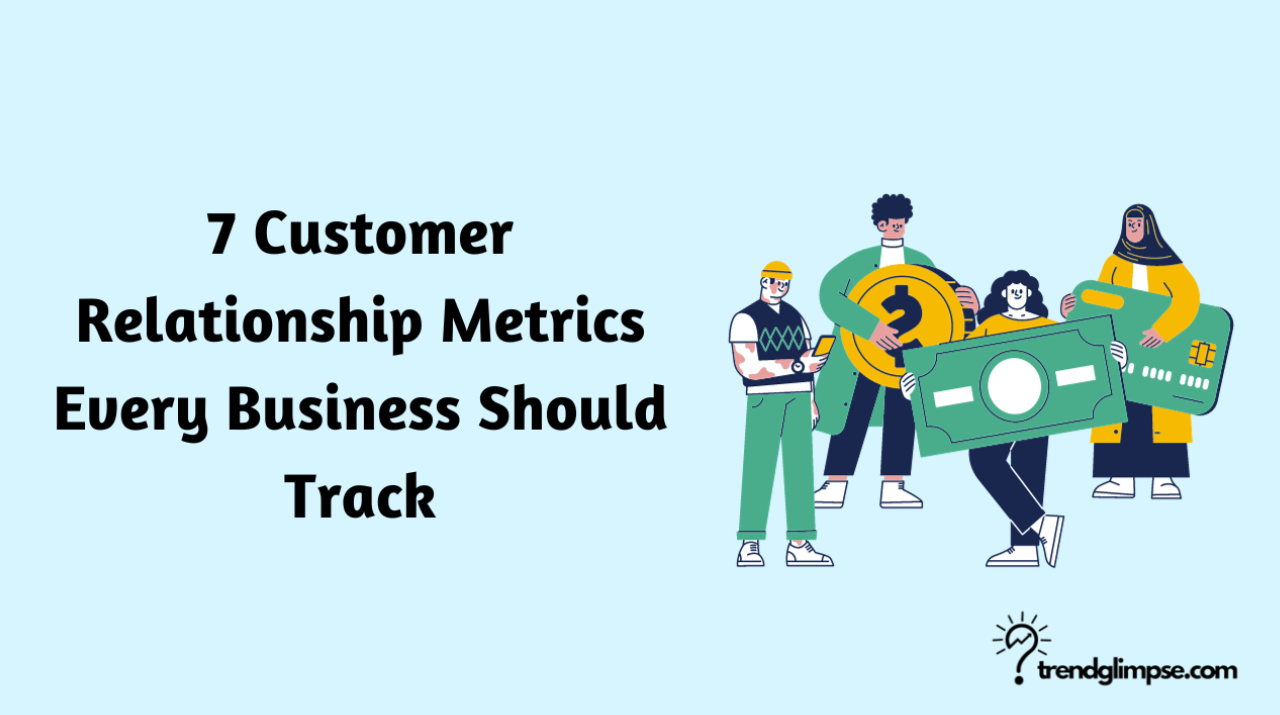Introduction
Happy Customers = Healthy Business
We all know that customers are the lifeblood of any business. But how do you really know if your customers are happy and coming back for more? That’s where key metrics come into play. Tracking the right customer relationship data can provide invaluable insight to help grow your business.
Let’s dive into the top 7 customer metrics you should be tracking:
#1 Customer Lifetime Value
Shows projected revenue per customer
Tracking Customer Lifetime Value (CLV) shows the projected revenue per customer over their entire relationship with your company. This helps you quantify and value each customer so you can focus marketing efforts on the most profitable ones. Companies like Amazon use CLV models to offer incentives to their high-value Prime customers. Calculate it by looking at metrics like average purchase value and purchase frequency over a customer’s tenure.
Helps you focus marketing dollars on most valuable customers
Analyzing Customer Lifetime Value allows you to identify your most valuable customer cohorts based on their purchasing habits. You can then target your limited marketing dollars towards the customer segments projected to return the most revenue through repeat sales and referrals. Software companies like Adobe cleverly offer discounted subscriptions to students, converting them into lucrative long-term high earners after graduation.
Formula: Avg Order Value x Purchase Frequency x Lifespan
The formula for calculating Customer Lifetime Value is: Average Order Value x Purchase Frequency x Estimated Customer Lifespan. SaaS companies like MailChimp can accurately model expected lifespans to determine payback of acquiring subscribers. Carefully tracking CLV over rolling time periods allows you to monitor success converting one-time buyers into loyal, high-value customers.
#2 Net Promoter Score
Measures customer loyalty
The Net Promoter Score (NPS) measures customer loyalty by asking a simple question – “how likely are you to recommend our company or product to a friend or colleague?”. It provides a metric for overall customer satisfaction and a baseline to track over time. Successful businesses like Apple continually measure NPS to understand the loyalty of their customer base.
Ask “How likely to recommend our company/product?”
The standard NPS survey asks customers to respond on a 0-10 scale of how likely they would be to recommend your company or a specific product to others. The simplicity of this standardized question allows businesses to benchmark against competitors. Top performers like Amazon send occasional NPS surveys to customers to continually gauge advocacy and identify problems.
Group into Promoters, Passives, Detractors
Based on their score, customers are grouped into Promoters (9-10 score), Passives (7-8 score), or Detractors (0-6 score). This segmentation allows understanding what percentage of customers are loyal advocates vs. unsatisfied. Software company HubSpot monitors the percentage of Promoters vs. Detractors as an ongoing “health check” on customer relationships and satisfaction levels.
#3 Customer Churn Rate
Want to keep this low!
Tracking churn helps you retain customers. Monitor the percentage who stop engaging over time to spot negative trends. Successful brands like Chick-fil-A analyze data to limit churn through special offers and improved experiences that delight loyal fans. Prioritize understanding why each leaves then address those pain points systematically.
Percent of customers lost in certain timeframe
Define a cycle like quarterly or annually then calculate what portion ceased business. Compare against your goals and past rates. Intuit quickly identifies groups at risk of abandoning TurboTax through analytics, steering them to educational resources that nurture the relationship. Set realistic churn benchmarks and revisit definitions if needed to drive analysis.
Can help identify issues leading customers away
Linking profile information to churned users reveals shared qualities of those likely to abandon ship. Capital One surveys defectors to pinpoint problems, then targets those weak spots to improve satisfaction. Track reasons for leaving to guide initiatives around enhancing reputations or products. Getting granular with your insights drives innovation and loyalty.
#4 Customer Acquisition Cost
What you spend to acquire customers
Knowing your customer acquisition cost—how much on average you spend to acquire a new customer—is crucial. Calculate all advertising and marketing costs over a period and divide that by the number of new customers gained. This shows how efficiently you’re spending to grow your customer base. Successful retailers like Warby Parker master this metric with online and brick-and-mortar synchronized marketing.
Compare to Lifetime Value to optimize spending
Relate your customer acquisition cost to lifetime value—the average revenue per customer. If your cost to acquire is $100 and lifetime value is $300, spending up to $100 to get that customer makes sense. But if your cost is $100 and lifetime value only $50, you’re losing money on acquisition! Compare the two, using quick back-of-the-napkin math or advanced models, to make smarter marketing decisions. Companies like Mailchimp use sophisticated analysis for optimal, highly profitable spending.
#5 Customer Satisfaction Score
Feedback directly from customers
Actively soliciting direct customer feedback provides invaluable insights. Set up systems to regularly collect reviews, comments, suggestions – whether through surveys, post-interaction emails, or feedback forms. Companies like Apple consistently ask for product feedback while others like Amazon use customer reviews to identify improvements. Listen and take action to boost satisfaction.
Survey at purchase, account milestones
Surveying customers around key moments – new sign-ups, purchases, contract renewals – helps gauge changing attitudes. Tailor questions to topics relevant to each stage. For example, Spotify surveys new users on onboarding then paying users on features. Choose touchpoints strategically to gain actional insights. Response rates will be highest right after meaningful interactions.
Gauges happiness and areas for improvement
Impactful customer satisfaction surveys reveal an emotional pulse alongside specific priorities. Ask targeted questions to quantify happiness levels, understand frustrations and delight. Include open-ended options tapping customer priorities too. Best practice is to keep it short and focused. For example, SaaS companies like Stripe, Slack or HubSpot assess satisfaction regularly, enabling them to rapidly iterate.
#6 Product Return Rate
Percent of products returned
Tracking the percentage of purchased products that customers return provides critical insight into quality issues. Leading brands like Amazon meticulously monitor returns. By segmenting by product line and reason for return, you can catch problems early. If a new product line has a high return rate, address concerns quickly before it impacts revenue and customer loyalty long-term.
Highlights issues with quality, shipping, accuracy
A higher than normal return rate flags potential problems in fulfillment, quality assurance or even product-market fit. Analyzing return volume patterns and linking data like shipping errors and negative reviews helps uncover the root cause. Companies like Zappos respond swiftly to quality concerns and Madewell accommodates easy returns to reduce friction. Keeping return rates low preserves resources and prevents customer frustration.
#7 Repeat Purchase Rate
Percent of return purchases
Tracking product return rate allows you to gauge quality and satisfaction. Set a goal for return rate (e.g. under 5%), then monitor if you are hitting it. Leading brands like Nordstrom excel here with liberal return policies but return rates under 10%. Ensure your products meet expectations, make returns easy, and customers will trust buying again.
Are current efforts encouraging re-engagement?
Re-engagement rate signifies if customers come back and buy again. Direct outreach campaigns, loyalty programs, and special offers can help. Starbucks rewards members visit more often and spend more overall. Set goals for repeat purchase rate over various timeframes, and track progress. If rates decline, revisit your loyalty and retention strategies. Consistent engagement fosters true customer loyalty over time.
Conclusion
As you can see, focusing on the right customer relationship metrics can provide great insight into how your business is actually performing with and for customers. Once you establish metrics like repeat purchases, referral rates, or reviews and feedback results, you have tangible markers to understand where you’re excelling and where there’s room to improve experiences.
Tracking these key metrics over time will reveal how customer perceptions may be changing and when shifts need to be made to product, services, or marketing. Understanding and acting on customer data through ongoing metric reviews is crucial for retaining happy customers and boosting your bottom line.

I have always been fascinated by the inner workings of companies and industries. So I decided to study business to explore it more. My goal is to take all my research and turn it into cool stories that give people a better understanding of the business world.

